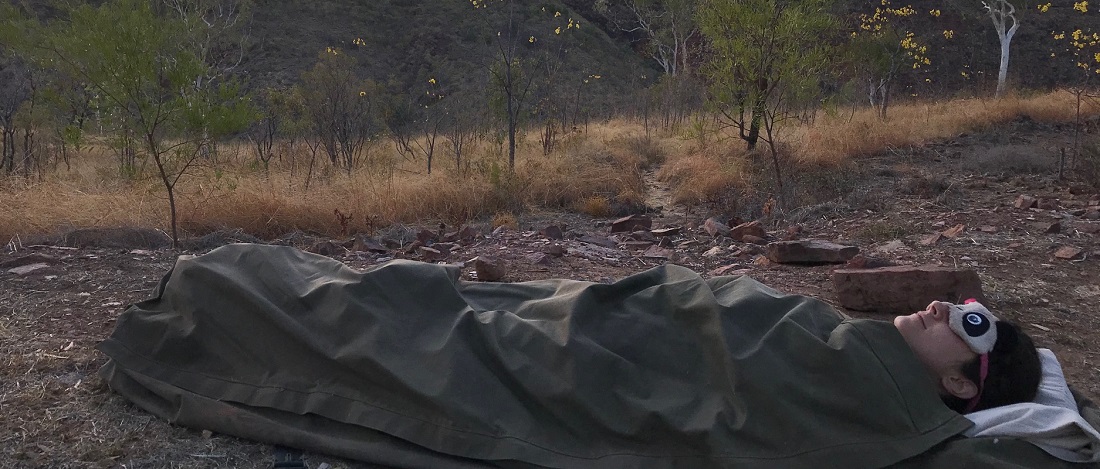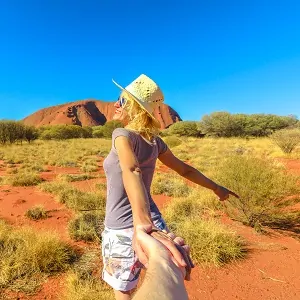Planning a trip out to the outback? If so, you are most likely going to encounter a swag. But what actually is a swag?
Sleeping beneath the stars is a dream for many people, but in some parts of Australia, this experience is readily available. When we say sleep under the stars, that’s how it is, you essentially become a part of the natural landscape.
Sleeping in a swag under the night sky is an incredible experience you can do across the country. Some popular areas where you can sleep in a swag include Kakadu and Uluru, the Daintree Rainforest, and the Great Ocean Road.
What is a swag?
Swags have long been used in Australia since the 1800s as a safe and comfortable way of sleeping while out trekking. Swags are essentially a sleeping bag made from canvas. They have a sponge-like mattress attached to the bottom to have some slight comfort. Inside the swag, you place a sleeping bag inside for more comfort and extra layers.
In the Territory’s outback, swags are a go-to piece of sleeping equipment as they’re basically small beds that you can set up with barely any hassle. Swags are also waterproof, warm, and even bug proof!
Why use it?
The swag is the most common way of camping in the Australian outback and is the best way to immerse yourself in its picturesque backdrop. The majority of outback tours offer swags for accommodation, including Uluru, and Kakadu.
Set up your swag for the night, a much easier job done compared to a full-size tent, and is even comfortable to sleep in. The most used size in tours is the single-size swags, making each member have their own private space.
Sleep under the stars and soak up the timeless scenery like nowhere else in the world!
Is sleeping in a swag safe?
The thought of sleeping out in the open in one of the remotest parts of Australia might seem like a daunting prospect. You’d be thinking about the wildlife and all kinds of insects, and we don’t blame you!
But the outback is a safe place to sleep as the air is dry, which can lead to fewer insects. And being in the middle of nowhere, there is a low chance other wildlife will be walking around.
Tips for using a swag
• Bring your own sleeping bag to put inside the swag.
• Keep the swag away from the campfire to avoid it catching alight while sleeping.
• Zip up or roll up your swag if you’re not inside of it. Some wildlife might find their way inside when you’re not looking!
• Roll up your swag and use it as a comfy camp seat if you don’t have one with you.
When you receive your new swag
There are some things to think about when receiving your new swag via the post. They are done simply to ensure that your new swag is good quality and hasn’t been damaged in transit.
Be sure to check and do these things when you receive your swag:
• Check that the box hasn’t gotten any damage.
• The swag’s canvas is in good condition and not damaged.
• Check that the swag has accessories including pegs, mattress poles, guide ropes etc.
• Prepare your new swag in the way the design indicates.
• Now that it’s set, inspect the swag again to ensure there are no holes or rips.
• Season the swag and douse it in water three or four times to ensure any pinholes that may have occurred during manufacturing swell up and seal the swag.
By sealing the swag, you will confirm it is prepared to protect you from any rain you may encounter.
The best thing about a swag is the connection you feel with nature as you fall asleep. And also, the fact it’s easy to set up! It’s an amazing first time camping experience or something new to try for those who are well versed in the camping world.
Explore Our Uluru Tours
-
8 Day Uluru to Adelaide Tour
Destination: Northern Territory
Duration: 8 Days
Tour type: Overland Tour
Available Now
From $1995
-
3 Day Uluru & Kings Canyon Premium Camping Tour
Destination: Alice Springs
Duration: 3 Days
Tour type: Short Break Tour
Available Now
From $780
-
3 Day Uluru & Kings Canyon Tour from Alice Springs to Alice Springs
Destination: Alice Springs
Duration: 3 Days
Tour type: Short Break Tour
Available Now
From $679
-
3 Day Uluru & Kings Canyon Tour from Uluru to Alice Springs
Destination: Northern Territory
Duration: 3 Days
Tour type: Short Break Tour
Available Now
From $679







